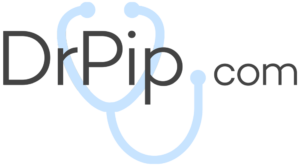“What can I give my 9 month old for allergies and what dosage?”
– Erin in Georgia
Hi Erin!
I get asked a lot about allergies this time of year (spring)–imagine that! Especially in the southern US, it feels like a large cloud is raining down yellow powder out of the sky.
In Georgia, the pollen allergy season starts at the end of February and runs through the beginning of June (give or take). Allergens are present year-round, but the spring pollens are the ones that impact patients the most. The number of visits I see for allergies goes up substantially every April.
Does pollen affect infants?
One interesting aspect to your question is that your child is 9 months old.
We typically say that seasonal allergies occur after 1 year of age. During infancy, children are exposed to germs (and pollen) for the first time, so the symptoms are more likely not true allergies. But, as anyone who has spent a spring in Atlanta can attest, we see a LOT of pollen–it covers everything in a blanket of yellow. So, I think the excess amount of particulate matter in the air will cause most everyone to experience some congestion and a runny nose.
Spring Pollen Allergy Treatments for Infants
First and foremost, I always recommend discussing treatment with your own physician.
That being said, I do think giving an antihistamine to your child at this age (9 months) is acceptable to see if it helps. You can use cetirizine or one of the other long-acting antihistamines once a day. You can also use fluticasone nose spray. However, kids often don’t like the nose spray.
Spring Pollen Allergy Treatments for Children
Over the years, I have come up with a step-wise approach that I give to my patients to help with their annual spring time allergies.
It is important to start this regimen before the pollen starts falling than to try and play catch up after symptoms begin. Here is my step-by-step approach:
- I recommend taking a long-acting antihistamine (Zyrtec, Claritin, or Allegra) every morning, beginning at the end of February.
- As the pollen counts increase in March, add a steroid nasal spray like fluticasone (Flonase) for older children through adults. (I typically buy the generic brand from Costco because I can get 5 bottles for a low price). For younger patients, I recommend Flonase Sensimist because it has a more pleasant smell and taste. If any makes its way to the back of the throat, children are a little more cooperative because there is not a metallic taste.
- When the pollen count (or specific allergen) peaks, I recommend adding a third medication at bedtime. This one is a prescription medication called montelukast (Singulair).
- As the pollen count starts to decrease, I recommend peeling off the medications one at a time until they are no longer needed.
- Note: I also recommend allergy eye drops (available over the counter) as needed throughout the entire time.
Other Ways to Reduce the Impact of Pollen Allergies
Here are some other smart actions to take that do not involve medications:
- Have your children wash their hands every time they come in from playing outside.
- Ask your children to avoid touching their face while playing outside (a difficult task, I know!).
- Also encourage them not to rub their eyes, even if they are itchy. Rubbing their eyes can cause them to get puffy, and it will take days for that to resolve.
Depending on where you live, the effects of pollen can be unavoidable. But hopefully, a little knowledge and prevention can help minimize the impact!
